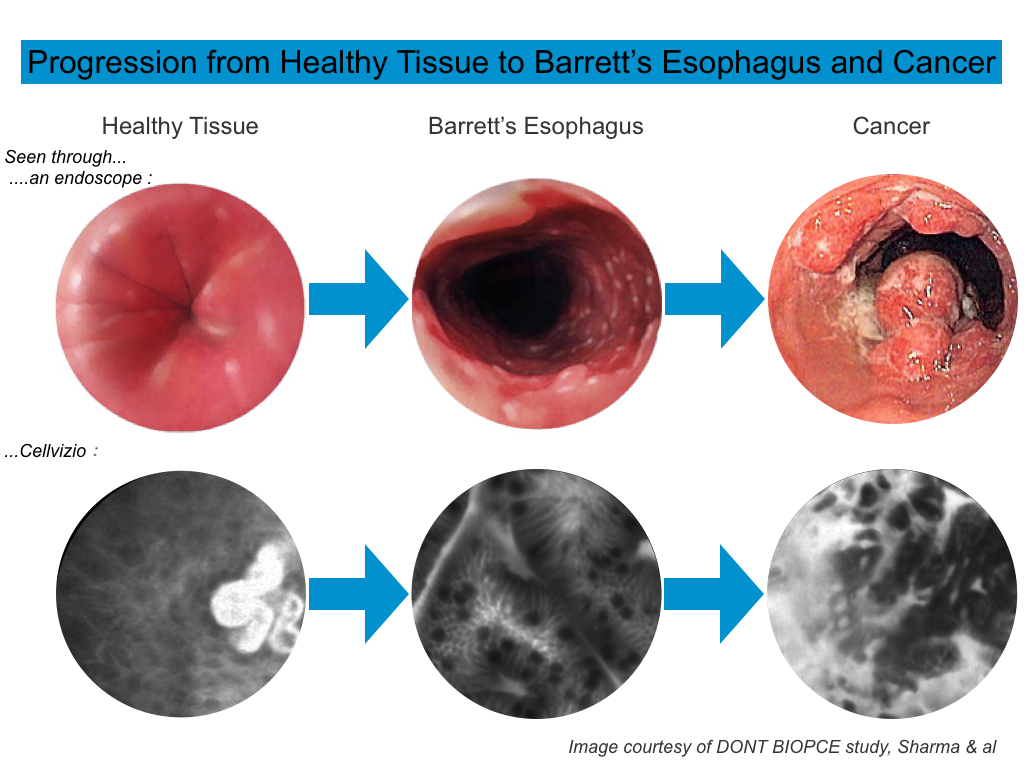Barrett’s Esophagus and Cancer

As Barrett’s Esophagus progresses, the potential for cancer can increase as changes take place in the lining of the esophagus. Patients with GERD should be evaluated for the presence of dysplasia that is associated with Barrett’s Esophagus to confirm the presence of abnormal precancerous cells so that appropriate treatment can be started.
Acid Reflux Disease (GERD)
Twenty percent of American adults experience routine heartburn, sometimes as much as twice a week. While these patients are at an increased risk for developing Barrett’s Esophagus, it is important to know that the vast majority of them will never develop cancer.
For patients diagnosed with GERD, it is recommended that they undergo ongoing monitoring to evaluate any changes in their esophageal tissue to indicate if they have Barrett’s Esophagus.
Barrett’s Esophagus and Dysplasia
About ten to fifteen percent of individuals who have GERD will develop dysplasia – abnormal precancerous cells that indicate a person has Barrett’s Esophagus. During an endoscopy procedure, biopsies checks the esophageal tissue for the presence of these cells and grades them. This helps physicians determine an appropriate treatment plan to keep these cells from changing into cancer.

Reducing the Potential for Barrett’s Esophagus Leading to Cancer
Depending on the type of dysplasia found and your overall health, your physician has several treatment options to eliminate the potential for Barrett’s Esophagus resulting in cancer. These include:
- Destruction of the Barrett’s Esophagus tissue
- More frequent endoscopies to evaluate the esophagus
- Esophageal surgery
Current Guidelines for Those with Barrett’s Esophagus
According to current guidelines, it is recommended that individuals diagnosed with Barrett’s Esophagus without dysplasia have an endoscopy and biopsy every three years1. Ongoing research suggests that patients with Barrett’s Esophagus may not require as many screening procedures except where doctors find precancerous cells (dysplasia) or when new symptoms appear.
If you have Barrett’s Esophagus, talk with your doctor to see what is best for you.
